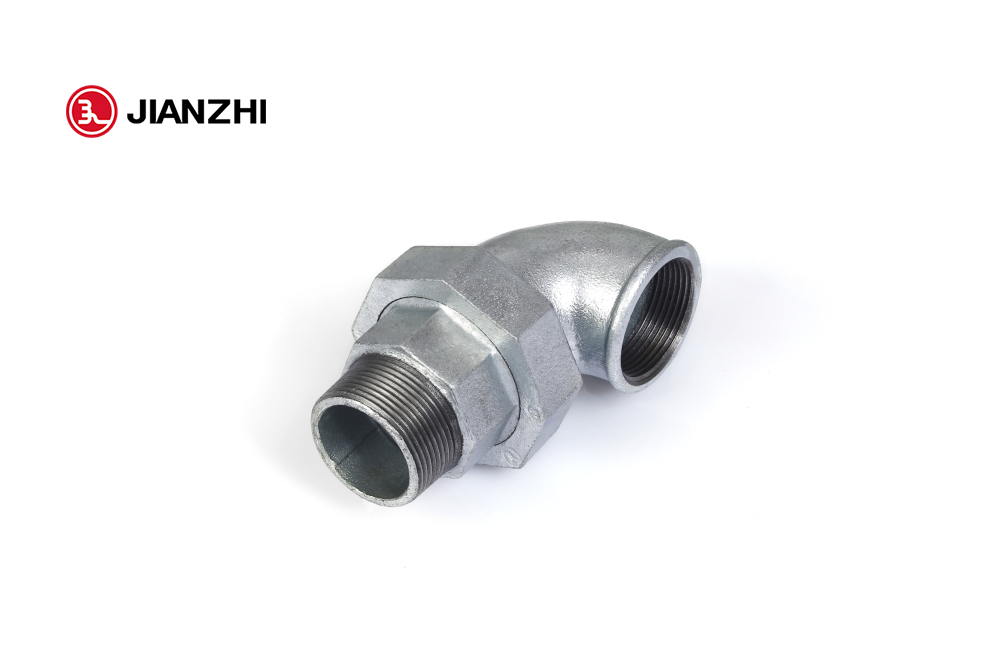Piping systems use elbows to change the direction of pipes. Elbows can be classified into three angles: 45 °, 90 °, and 180 °. These three are more commonly used. The engineering requirements also call for abnormal angle elbows, such as a 60° elbow. According to the elbow material is divided into stainless steel elbow, carbon steel elbow and so on. According to the production method, it can be divided into pressing elbow, forging elbow, pushing elbow, casting elbow, etc. A short radius elbow is also classified as a long radius elbow. What is the difference between long and short radius elbows?
The long radius of the elbow is relative to the short radius, because there is a shorter radius, so it has a long radius. The long radius elbow is a more common type of bend fitting connected to a pipe or pipe, commonly referred to as a 1.5D elbow. Short radius elbows are naturally shorter than long radius elbows. They are often referred to as 1D elbows. There are fewer short-radius elbows than long-radius elbows. There are also cases where long radius elbows are used and space is not allowed, for example in marine engineering conditions.
Long radius elbow
The radius of curvature of an elbow is equal to the diameter of the pipe, which is often said to be one fold. D is the elbow diameter. Long radius is the most commonly used, the general default is long radius, high pressure or high flow rate of place will use long radius if it is a solid pipe resistance requirements when to use a larger radius of elbow. Short radii are generally used in low pressure fluids or where the elbow is limited during installation. If there is no condition limit or is not specified in the contract, long radius elbow is preferred. Packing in wooden cases, wooden pallets, etc. Long radius elbow material has stainless steel, carbon steel, alloy steel, etc. The scope of use are: sewage treatment, chemical, thermal, pharmaceutical, aerospace, electric power, paper and other industries.
Short radius elbow
Intuitively, the short radius elbow is much shorter than the long radius elbow, and the bending radius of the elbow is very rapid. Long radius elbow is the most commonly used, general default is long radius, high pressure or high flow rate places will use long radius if it is a solid pipeline resistance requirements to use a larger radius elbow. Short radius is generally used in low pressure fluid or where the elbow is limited. Long radius elbows are preferred if there are no conditions or if they are not specified in the contract.
Similarities and Differences between Long and Short Radius Elbows:
There are many similarities between long radius elbows and short radius elbows. For example, they are connected to pipes. Their function is to change the direction of the pipe; Their diameter, angle, material, wall thickness, etc., can be kept consistent and so on.
Difference between long and short radius elbow:
1) From the length of the elbow, it is clear that the elbow with a long radius must be longer than the elbow of a short radius, and by 0.5DN.
(2) From the performance point of view, the wear degree of the long radius elbow is less than the short radius elbow, the corrosion force is also greatly reduced, the resistance is also smaller, obviously better than the short-radius elbow.
And (3) from the angle of elbow use range, in general, long radius elbow (R = 1.5 DN) should be; Short radius elbows (R = 1.0DN) are commonly used where size is limited. The working pressure should not exceed 0.8 times of the same size long radius elbow.
Personal advice is: can use the location of the long radius elbow try not to choose the short radius elbow,.It is not possible to use the long radius elbow, then use the short radius elbow. In short,.when selecting the elbow, we need to decide according to the actual working conditions of the pipeline or pipeline.

